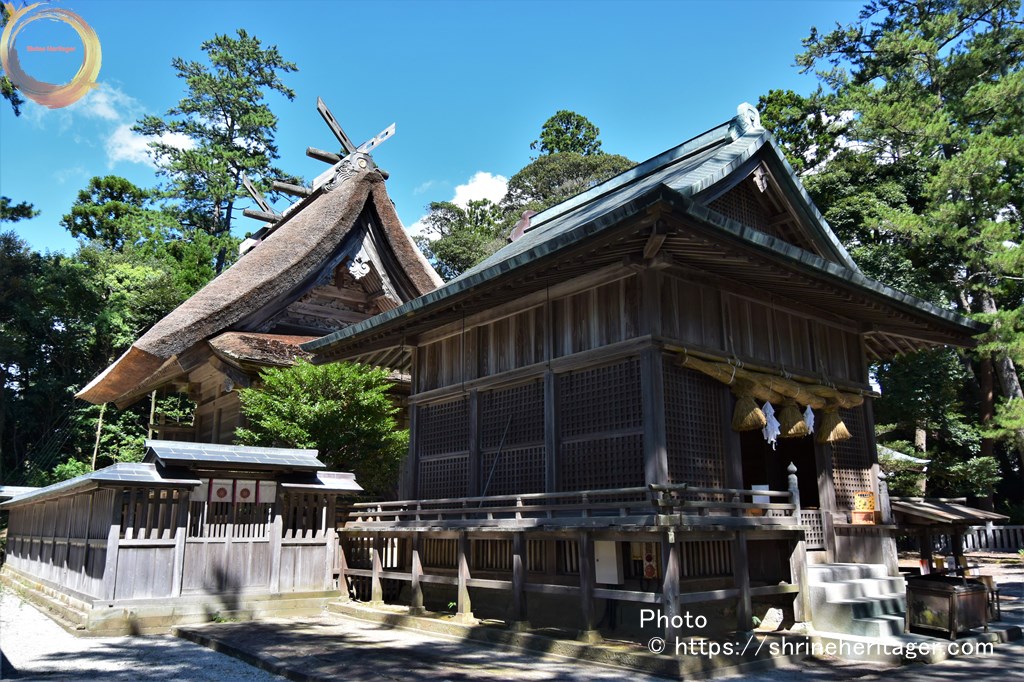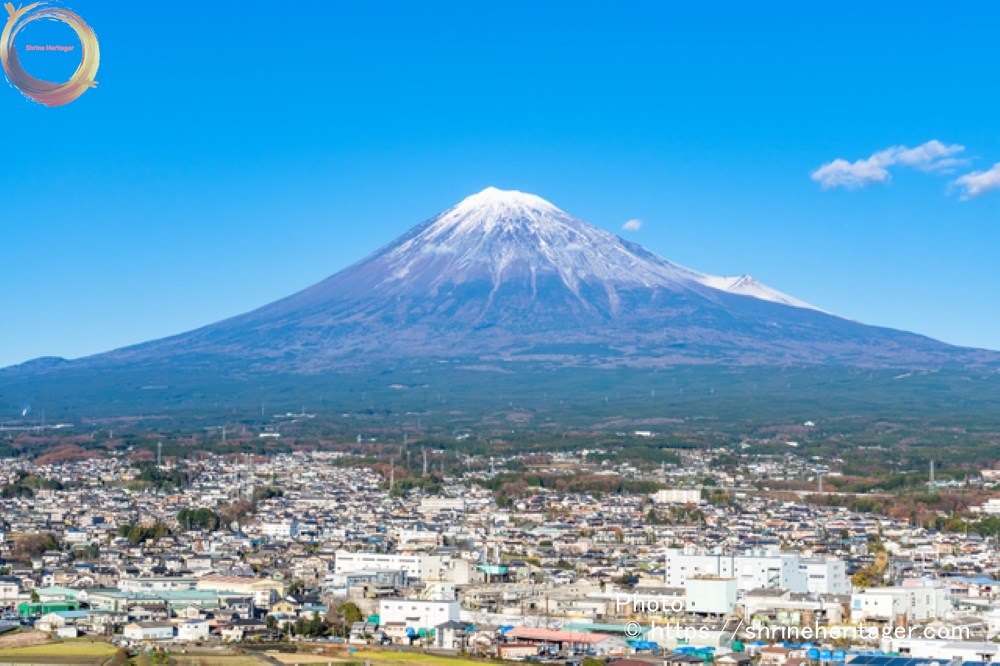水若酢神社は 隠岐国(oki no kuni)の水若酢神社(Mizuwakasu Shrine) is located in the five districts of Okinoshima Town (Dogo) in Ichinomiya, Oki Province. It was founded in the era of the 10th Emperor Sujin, and is an old shrine with a beautiful precinct where old black pine trees grow. It is said that Mizuwakasu no mikoto, the god of rituals, was the god of land development in Oki Province and the protection of the Sea of Japan.
目次
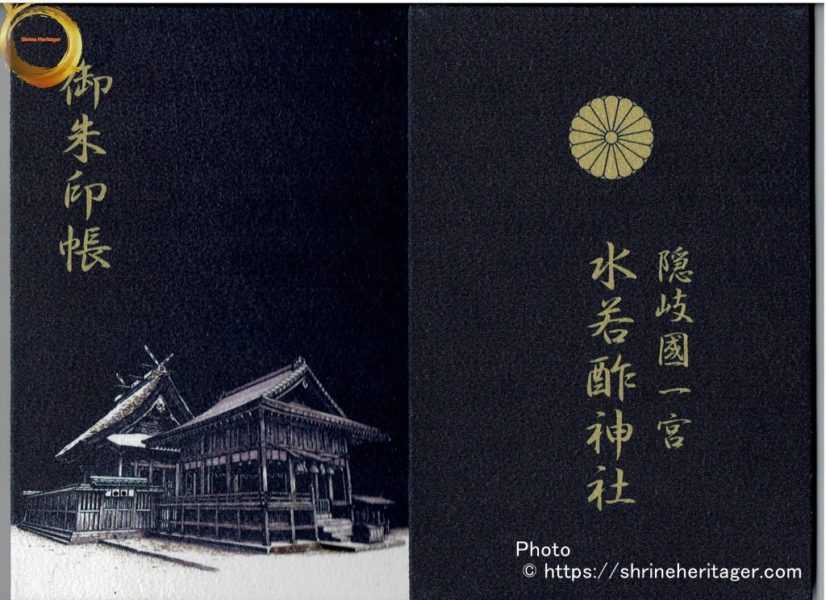

1.ご紹介(Introduction)
The official name of this shrine and how to be called The present address and map I will introduce the history of the god and the shrine enshrined.
【神社名(shrine name)】
水若酢神社(Mizuwakasu Shrine)
(みずわかすじんじゃ)
[通称名(Common name)]
明神さん(myojin san)
【鎮座地 (location) 】
723, Okinoshima-cho, Oki-gun, Shimane Prefecture
[地 図 (Google Map)]
【御祭神 (God's name to pray)】
《主》
本 殿 水若酢命(mizuwakasu no mikoto)
《配》
左相殿 中言神(nakagoto no kami)
右相殿 鈴御前(suzu no gozen
The name of the shrine comes from the main festival god Mizuwakasu no ikoto, but this god is a god visible in the "Kiki Myth" and does not know the details of its lineage and traces.
There are various theories about interpretation, and water is also referred to as "water" or "water" as a beautiful name.
There is also a theory that it is related to The Tamawaka Vinegar Life Shrine in Oki, which has the same "young vinegar"
We do not know the details of the lineage and traces of suzu no gozen (nakagoto no kami) Suzu gozen.
【御神格 (God's great power)】(ご利益)
・五穀豊穣 Pray for good harvest
・海島守護 Guardian deity of the sea and the island
・航海安全 Voyage safety
etc etc
【格 式 (Rules of dignity) 】
・『延喜式神名帳(engishiki jimmeicho)』所載社(名神大)
・ 隠岐国一之宮(oki no kuni ichinomiya)
・ 別表神社
【創 建 (Beginning of history)】
The 10th Emperor Sojin's Imperial Day
【由 緒 (history)】
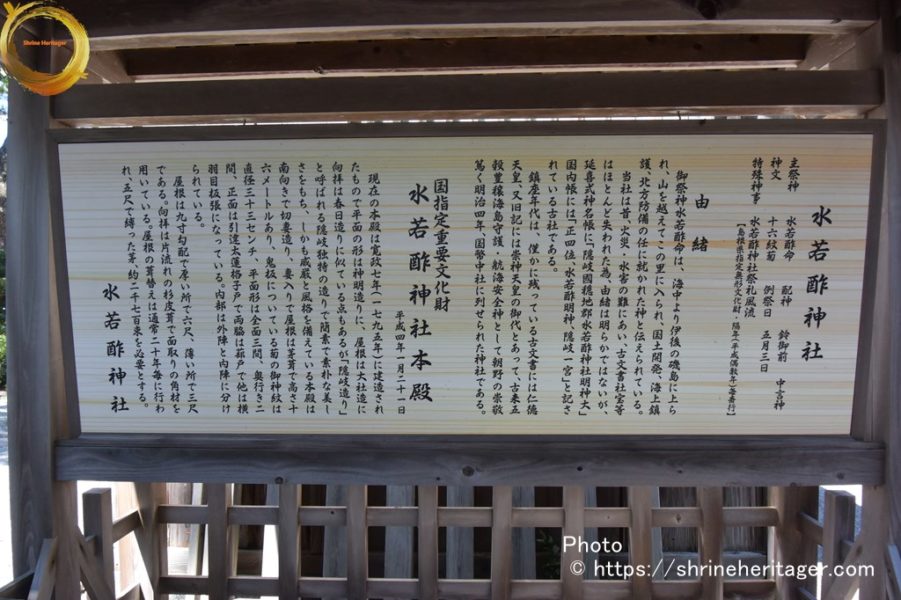
水若酢神社(Mizuwakasu Shrine)
主祭神 水若酢命(mizuwakasu no mikoto)
God Crest Chrysanthemums 菊chrysanthemum
May 3rd
特殊神事 水若酢神社祭礼風流(県指定無形文化財 隔年毎偶数年斎行)It is said that the God of Mizuwaya Vinegar was raised from the sea to The Island of Igo, crossed the mountain into this village, and was entrusted with national land development and northern defense.
Our company was in the difficulty of fire and flood damage in the old days, and because the ancient documents, company treasures, etc. were almost lost, the time is not clear, but it is an old shrine that is written in the Engi-style God's name book "Oki National Calm District District Mizuwakmei Shrine Meijin university" in the domestic book, "4th place, Mizuwa wakazu Myogami, Oki Ichinomiya".
In the ancient documents in which the sitting age remains slightly, Emperor Nintoku and the old book are shrines that have been revered in Asano as gods of rich harvest, sea island protection and navigation safety since ancient times, and were listed in the National Mint Nakasha in 1868.
国指定重要文化財 水若酢神社本殿January 21, 1992
The present main shrine was built in 1795, and alover the shape of the plane is Shinmei-zo, and the roof is similar to Kasuga-zo, but it has a simple and simple beauty called "Oki-zo" and has dignity and dignity. The main shrine is facing south and the roof is 16 meters high with gyechedam-made saws, the crest of the chrysanthemum attached to the demon plate is 33 cm in diameter, the plane shape is between the front 3, the depth is 2, the front is a pull thick lotus lattice door and both sides are 蔀 houses, and the other is horizontal feathered plate. The interior is divided into the outside and the inside.
The roof is six lengths in a thick place with a nine-sun slope, and three measures in a thin place. On the other hand, the square material of the snout is used in the cedar skin of one flow. The roof is usually changed every 20 years and requires about 2,700 bundles of five-length combs. Mizuwawa Vinegar ShrineFrom the precinct guide board
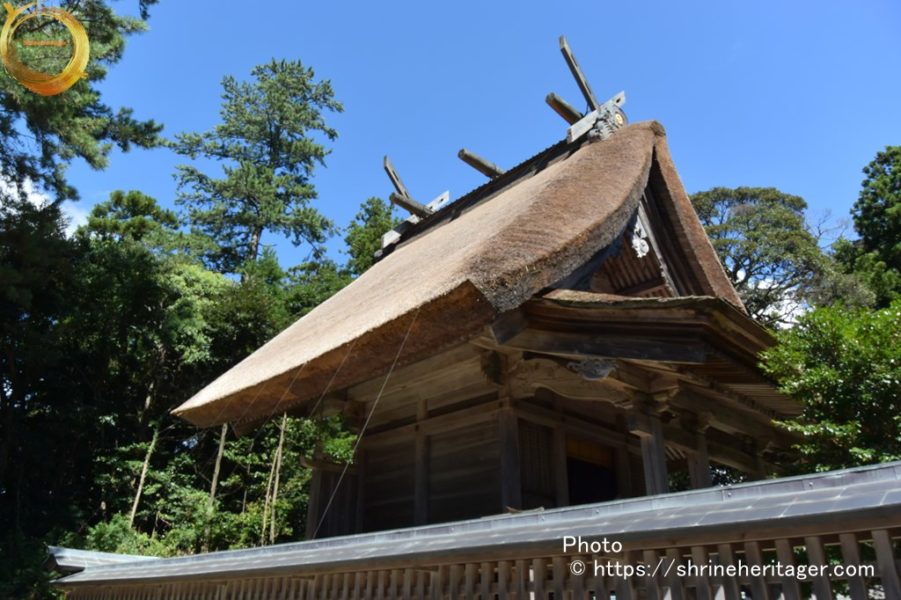 2
2
【境外社 (Related shrines outside the precincts)】
元宮 捧羽山神社(hoba san shrine )
《主》水若酢命(mizuwakasu no mikoto)
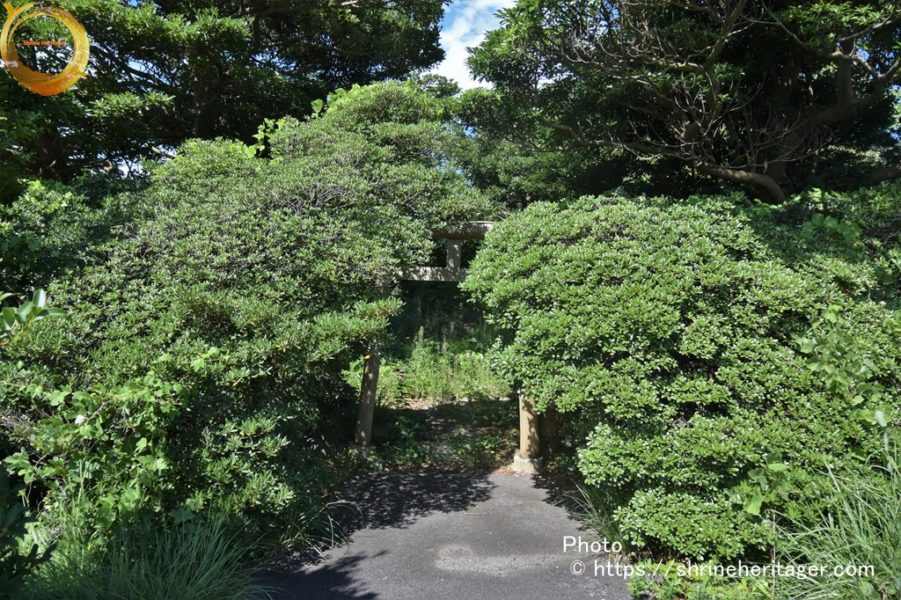
According to the sinceath of 水若酢神社(Mizuwakasu Shrine)
"Omatsujin Mizuwa wakazu life is raised from the sea to the island of Kashiwa in Igo, and it enters this village beyond the mountain."
ここに記載の山(田畑の中の小丘)を捧羽山(hoba san)と呼び 捧羽山神社(hoba san shrine )が鎮座します
伊後神社と捧羽山神社の記事をご覧ください
スポンサーリンク
この神社の予備知識(Preliminary knowledge of this shrine)
This shrine has a long history.
『延喜式神名帳(engishiki jimmeicho)The two volumes that are regarded as important among all 50 ritual- style scrolls created by the Imperial Court during the middle Heian period are called " engishiki jimmeicho " (edited in December 927). Approximately 1100 years ago, the name of "2861 company" and the number of gods enshrined there are listed in the list of government offices (shikinaisha) nationwide.
【延喜式神名帳】(engishiki jimmeicho)This record was completed in December 927 AD.
[旧 行政区分](Old administrative district)
(神様の鎮座数)山陰道 560座…大37(うち預月次新嘗1)・小523
[旧 国 名 ](old county name)
(神様の鎮座数)隠岐国 16座(大4座・小2座)
[旧 郡 名 ](old region name)
(神様の鎮座数)穏地郡 3座(大2座・小1座)
[名神大 大 小] 式内名神大社
[旧 神社名 ]水若酢命神社(貞・名神大)
[ふ り が な ](みなわかすのみことの かみのやしろ)(みょうじんだい)
[How to read] (minawakasu no mikoto no kaminoyashiro)(myojindai)
https://www.digital.archives.go.jp/DAS/meta/listPhoto?LANG=default&BID=F1000000000000004146&ID=M2014101719562090086&TYPE=&NO=画像利用
国立国会図書館デジタルコレクション 延喜式 刊本(跋刊)[旧蔵者]紅葉山文庫
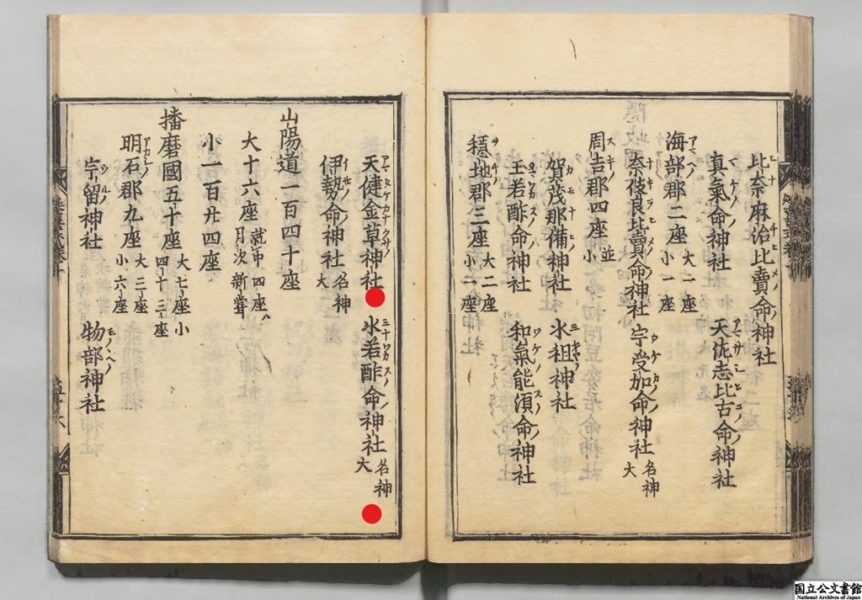
スポンサーリンク
[Otaky Point] (Points Selected by Japan Otaku)
I will introduce the preliminary knowledge that you will be interested in this shrine from a otaku's point of view.
About the festival of 水若酢神社(Mizuwakasu Shrine)
祭礼風流(sairei furyu)
It used to be held on March 3rd of the lunar calendar. It is held especially every other year (even year A.D.) now.
"Seaei furyu" of Mizuwawa Wakazu Shrine
It is counted as one of the three major festivals in Oki and is designated as an intangible folk cultural property designated by Shimane Prefecture.
"The Three Great Festivals of Oki"
(Seaei furyu at 水若酢神社(Mizuwakasu Shrine))
"Oki Mura Matsuri Furyu" at Ichinomori Shrine and Hachioji Shrine
"Goree furyu" at Tamawaka Vinegar Life Shrine
水若酢神社(Mizuwakasu Shrine) Festival Furyu
水若酢神社(Mizuwakasu Shrine) is a shrine built in each village in the Goka district, and in addition to being listed as Meijin Taisha in the Enki- style god name book of the Heian period, it was said to be one of the shrines of Oki Country.
The former company site is located to the north of the present, and has been changing several times due to the loss of the river due to flooding.
In this festival, which is an example festival of 水若酢神社(Mizuwakasu Shrine), a mountain car called "Katsurayama" is held to the travel office, but it is said that it is due to this washed-out shrine, the shrine body, and the materials for reconstruction.
The float is marked with a turtle's head, the pine tree is decorated with white birds, red and white flowers, and the ropes brought from each district are tied, and it is towed to the travel office lively by the Uchiko at the hand of the wooden song. Children also participated around the age of two or three, and the first time they visited the mountain, they called it "Hatsuyama-kei."
Next to the travel center, there is a stage where kagura dances such as shrine maiden dance, first stand, lion dance, and dairaku are performed. In the baba next to it, a yabusame is done.From the precincts guide board
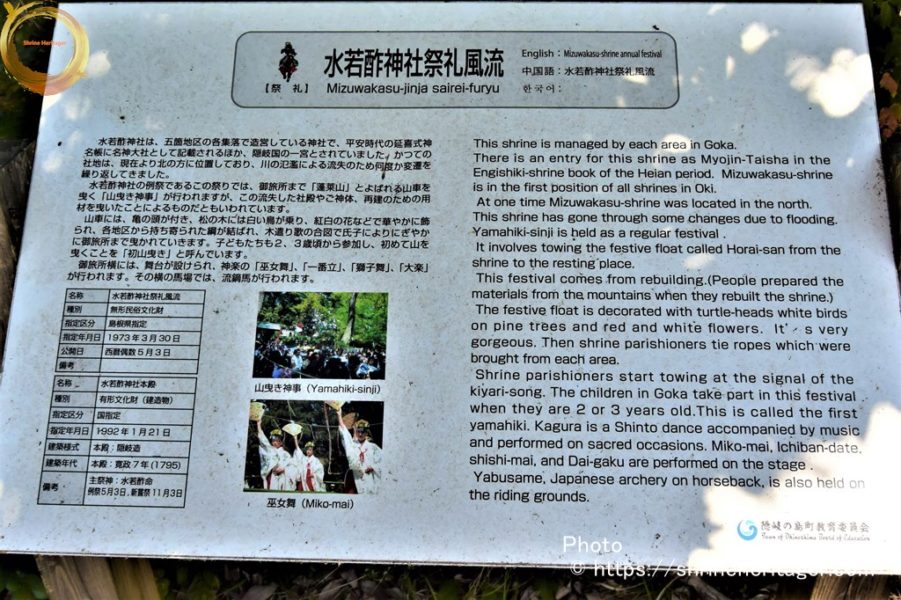
Oki Classical Sumo
The roof of 水若酢神社(Mizuwakasu Shrine) is usually changed every 20 years.
In Oki, a sumo tournament called "Classical Sumo" is held throughout the night when there is a memorial project of the town and the completion of a large-scale public works project.
It is said that the name "classical sumo" was originally held as a dedication sumo "Miya Sumo" to God.
The Characteristics of Oki's Classical Sumo
It is done in the second game (the first winner gives up the second victory)
Held as a commemoration of the completion of shrine Sengu shrines and large-scale public works projects
It is carried out through the night (starting in the evening and finishing in the afternoon of the next day)
More than 200 people participated as sumo wrestlers in the big tournament.
The number of initiatives is close to 300, such as without five people
The highest rank is Oseki (there is no yokozuna, leaving the old sumo form)
The pillar of the ring is presented as an article of honor in Oseki Sekiwaki of the role wrestler
Koyuki is presented with a stick connecting the pillars.
Once every 20 years, classical sumo is played in a covered ring on the left side of the torii gate.
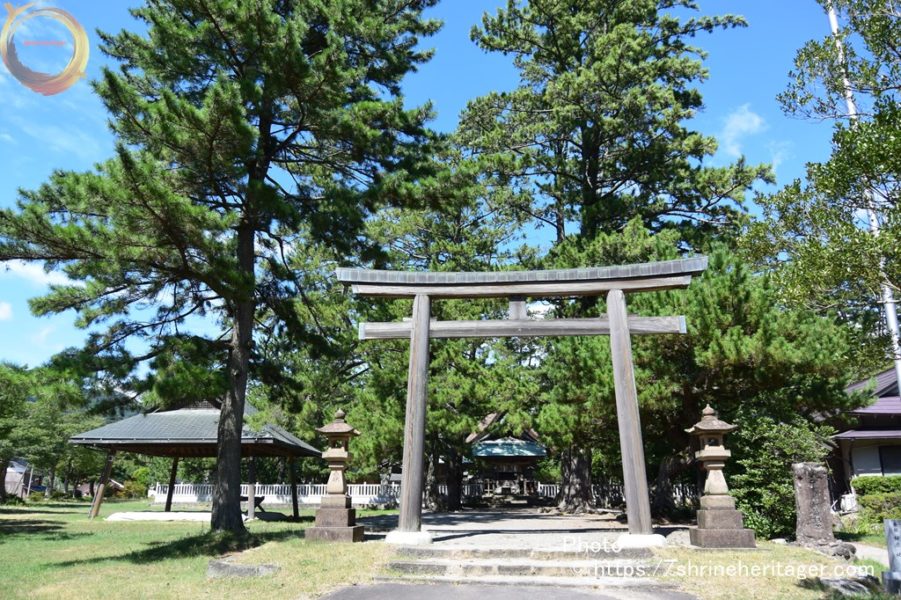
スポンサーリンク
Visit the Shrine (Pray at the Shrine)
I introduce the state when I visited this shrine.
About 13.8km
from Saigo Port via R485 about 25 minutes by car We will sit in the northwestern county after the island.
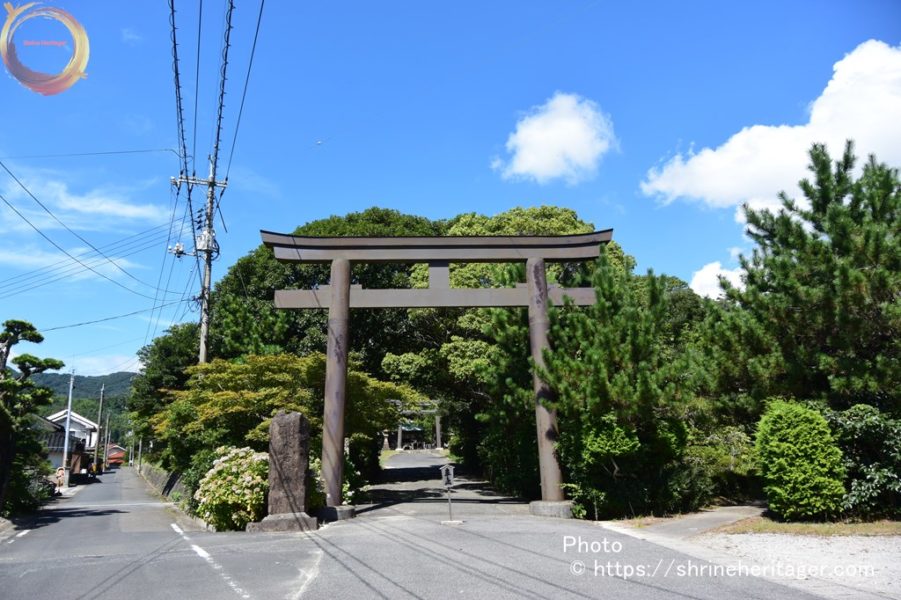
Arrived at Mizuwakasu Shrine
One torii gate is built on the company's name, "Oki Ichinomiya Mizuwa waka vinegar shrine"
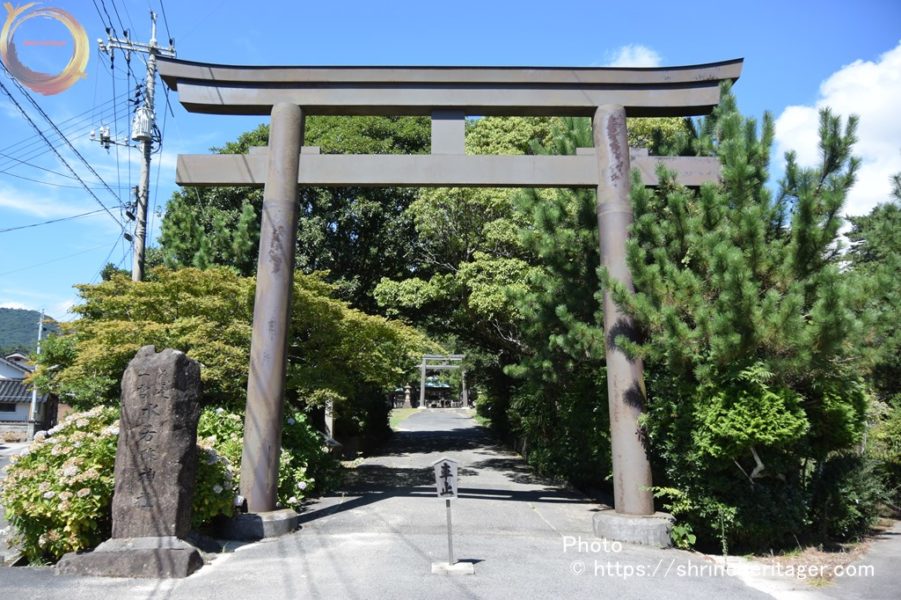
If you bow and go through the torii gate, you will 膺 the remains of a private cram school and a memorial hall.
At the end of the Edo period, Kunito Nakanishi, a national scholar, established a private cram school in the precincts and recited the king.
膺 School is a private cram school where a man from Nakamura who was opening a school in Kyoto at the end of the Edo period was taught by Ryozo Nakanuma, a samurai from Nakamura, who returned home on fire as a son-in-law, cooperated with his adoptive father, Nakanishi Awasai, as a lecturer, and taught the way of Bunmu to gather young people on the island and protect the Oki country from the outside.
The young people who learned here focused their passion on the Oki uproar of the fourth year of Keio.
This building was used as a county school from the Meiji Restoration and existed until around Meiji 30.
From the stone monument in the precincts
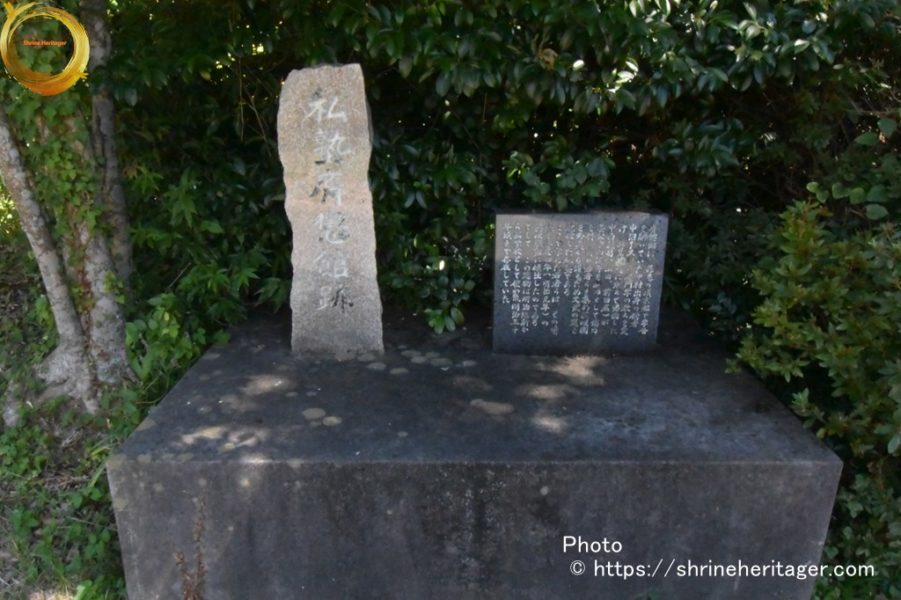
When you come to the second torii area, the precincts are opened
There is a ring with classical sumo once every 20 years on the left side of the approach to Kuromatsu.
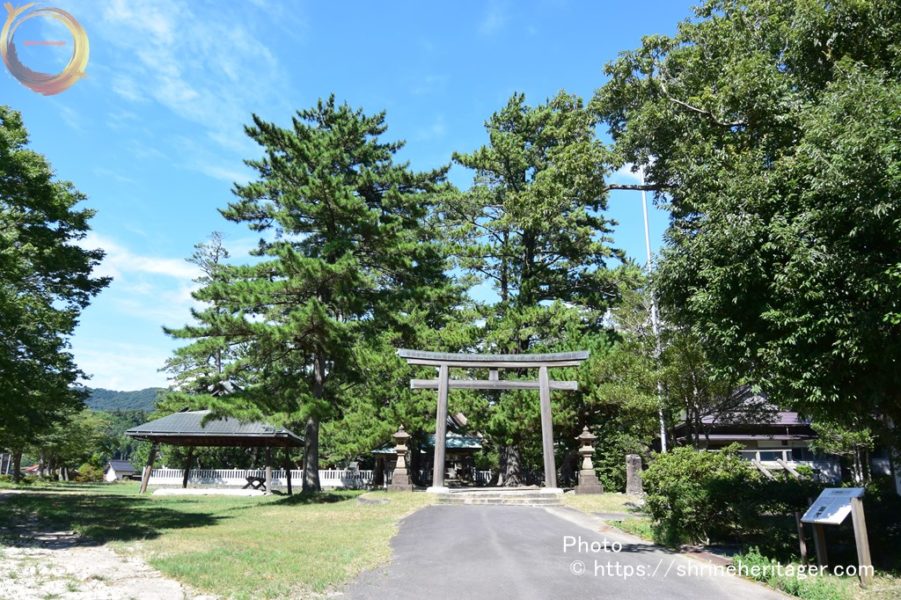
When you go through the torii gate, there is a approach through the old black pine tree, and there is a feeling.
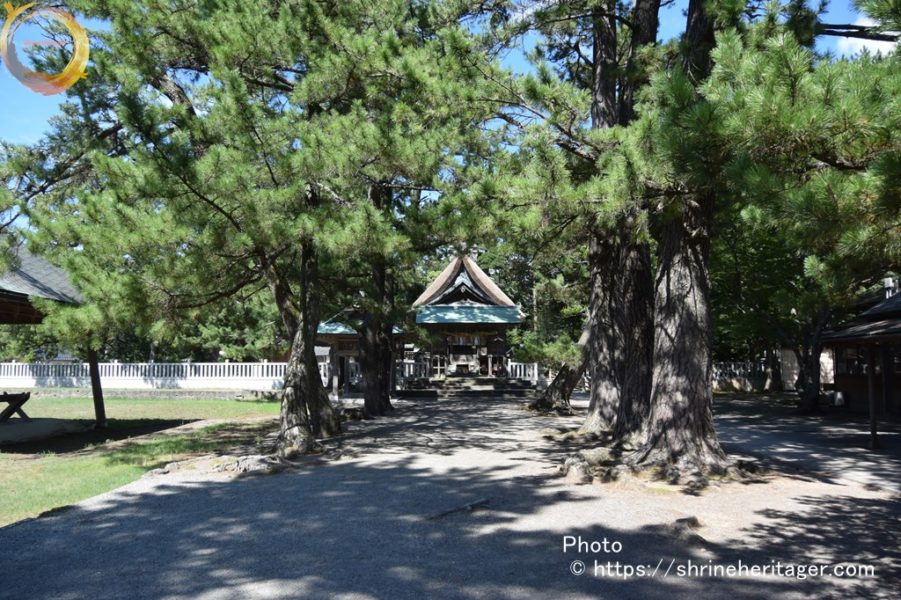
There is a turtle's hand water house on the left hand in front of the Shinmon Gate.
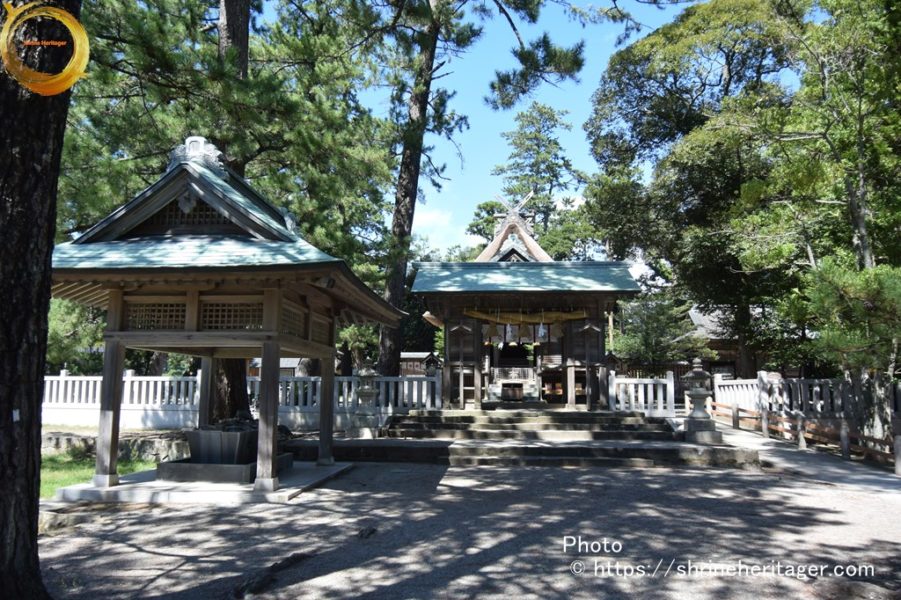
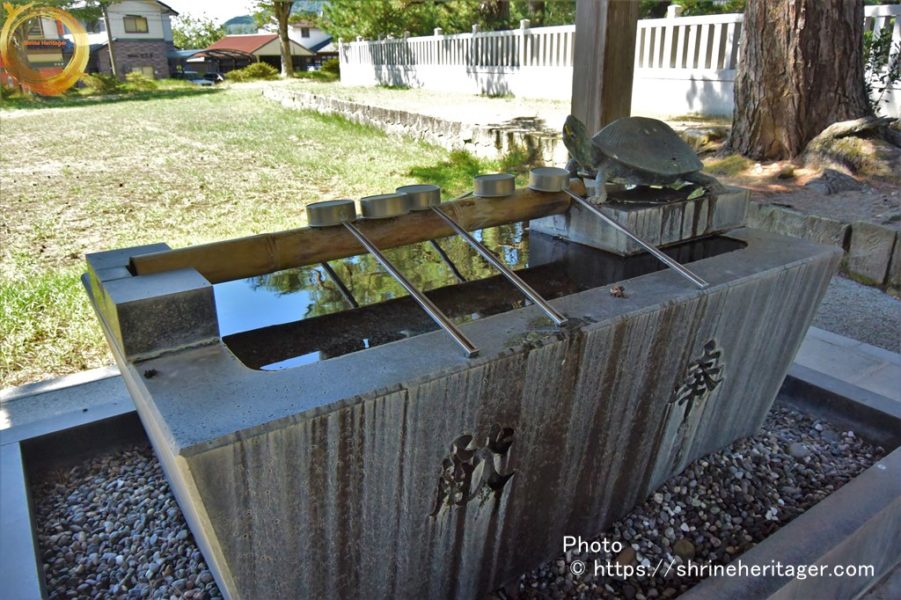
The Shinmon Gate where the line rope hangs is built and it is passed through.
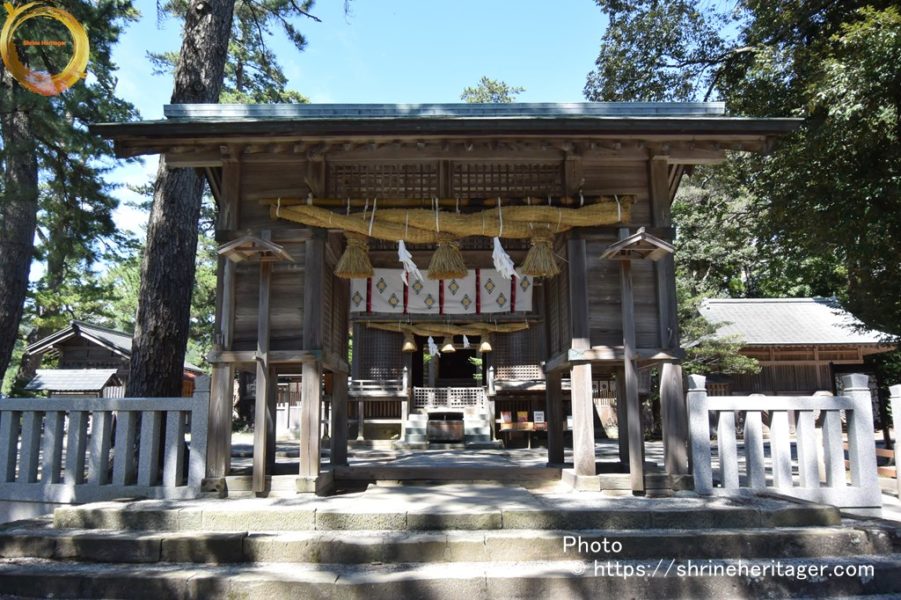
The shrine hall is built in front of the building.
I'm going to go to the shrine.
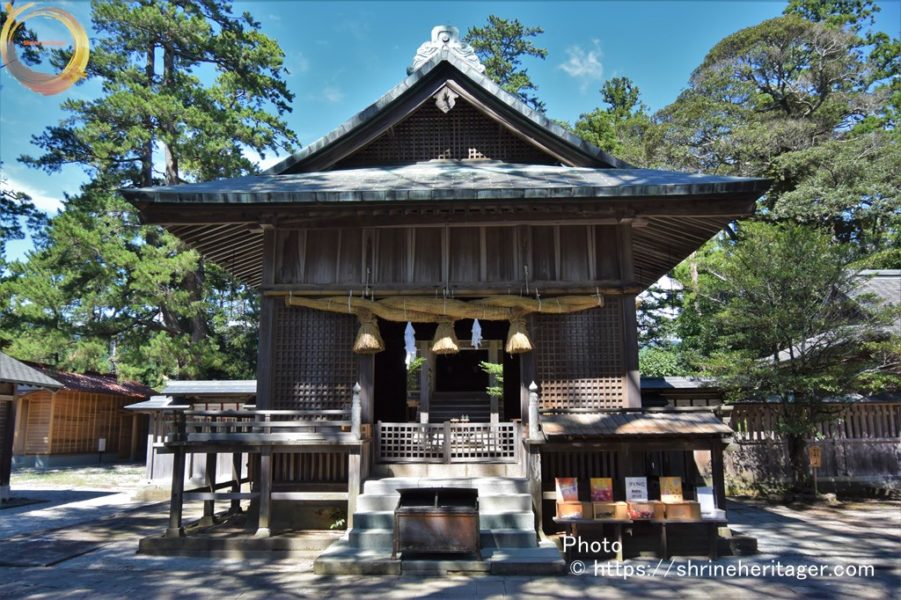
I wish you a change.
A prayer that puts both hands together, praying to reach the deity of the festival
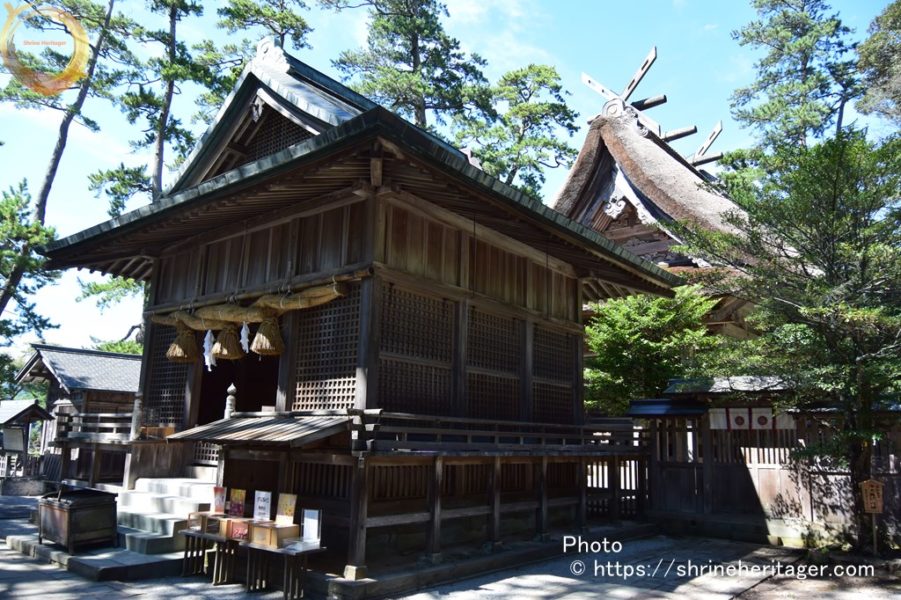
At the back of the shrine is a main shrine called "Oki-zuzu" which is unique to Oki
In 1992, it was designated as an important cultural property along with the main shrine of Tamawaka Vinegar Life Shrine.
I worship the main shrine from the left and right.
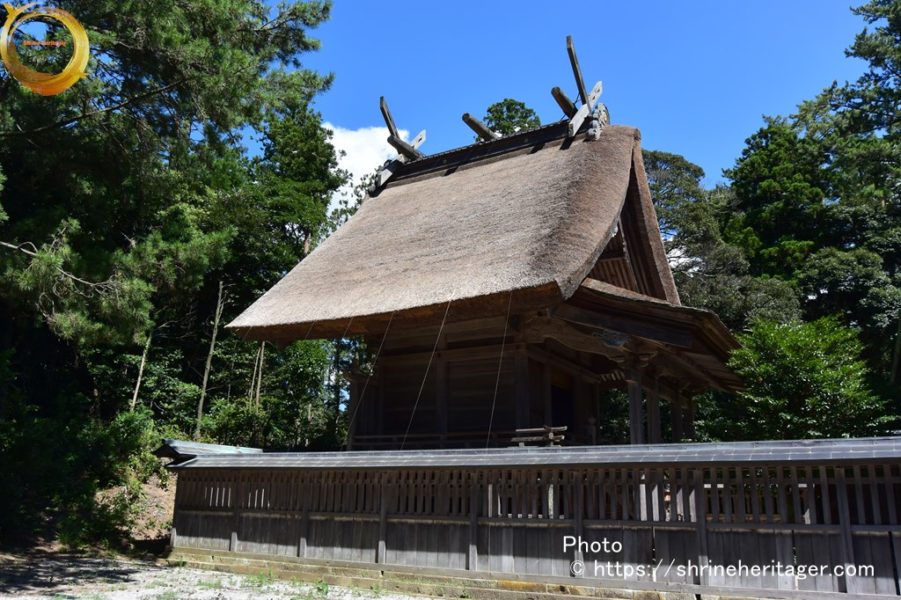
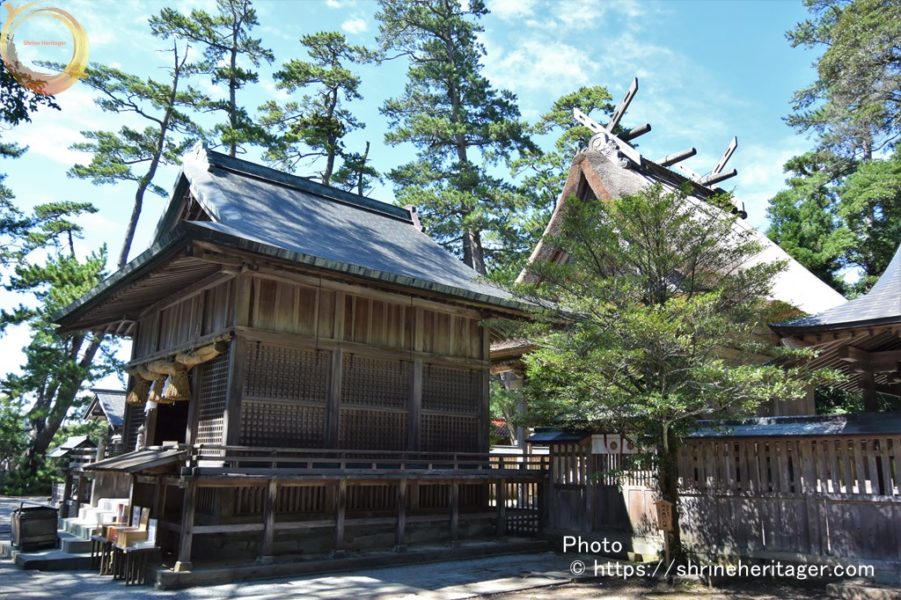
国指定重要文化財 水若酢神社本殿 Mizuwakasu Main Shrine
January 21, 1992Mizuwakwa Vinegar Shrine Honden Mizuwakzu Shrine Honden is one of the representative examples of Oki-zuzu, a shrine building unique to Oki.
In Oki-zo, the main shrine enters the wife for a long time in the back, and the roof is a cut-off roof, but it puts a candle called the front worship. Mizuwaka Vinegar Shrine Honden, as well as Tamawaka Vinegar Life Shrine, as a large-scale shrine building, this Oki-zu
The present main shrine is said to have been rebuilt by local carpenters such as the carpenter's building Liang Mori Contributehachi (Kiyohachi) because the previous shrine building was wrecked in 1795. At the time of construction at this time, due to the request of the shrine again and again, a request for the cooperation of the donation came out from the government office in Oki country which combined the island front which crossed the sea. In the wish from this shrine to the government office, it is written that the construction of the shrine before that was also built by collecting donations from all over Oki Country.
It is a shrine that has continued since ancient times as described in the Enki-style god name book of the extension 5 years (927), and it can be said that it was supported not only by the surrounding area but also by many regions as the first shrine in Oki Country.
Oki Island Town Board of Education

In the precincts, the god crest of the "oni ita" chrysanthemum which is not a demon tile is 33 cm in diameter, the plane shape is between the front 3 and the depth 2, the front is a difference thick lotus lattice door, and both sides are 蔀 houses, and the other is horizontal feathered plate.
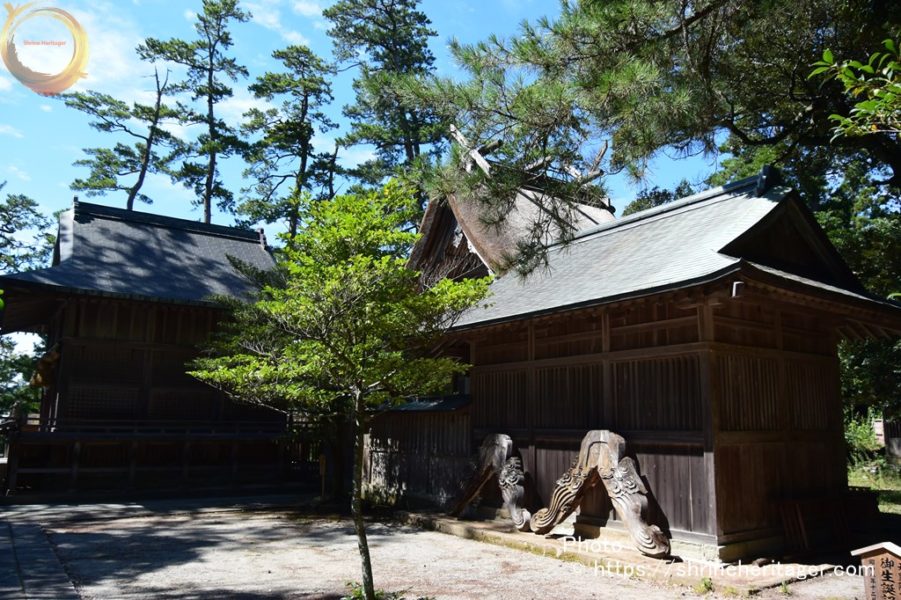
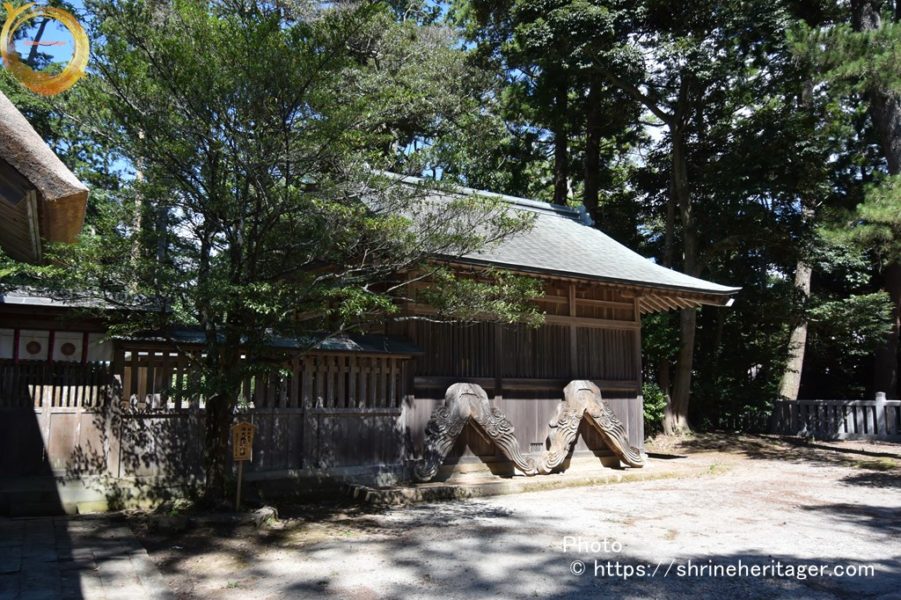
"okamiya" In general, it is a "temporary shrine" where the mikoshi leaves the shrine and is temporarily rested to perform Shinto shrines.
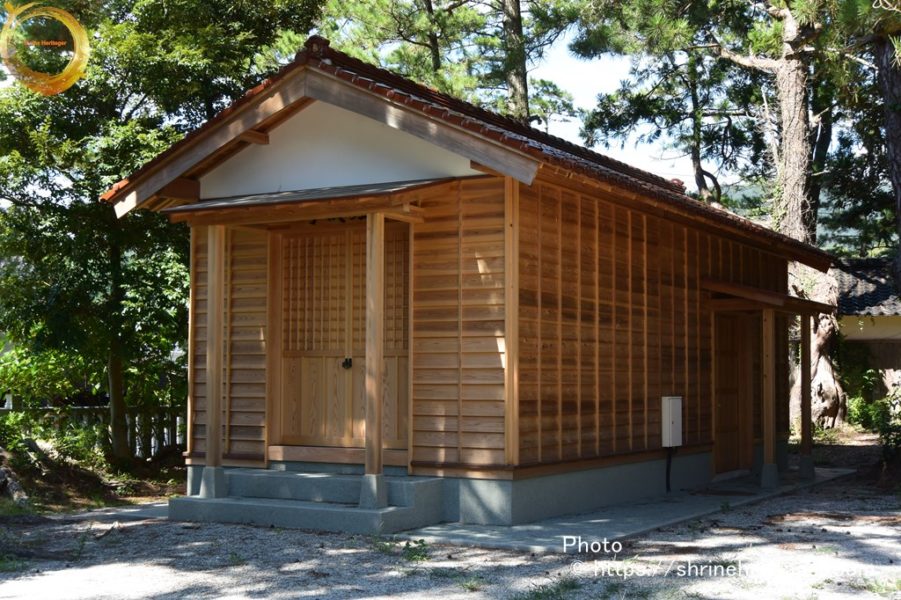
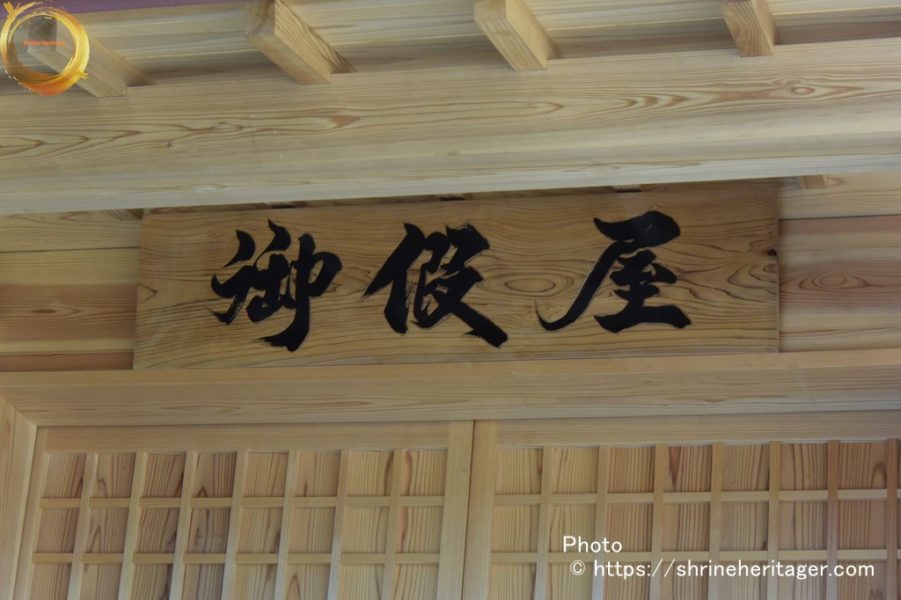
Is the building with the long-饌 "God's place"?
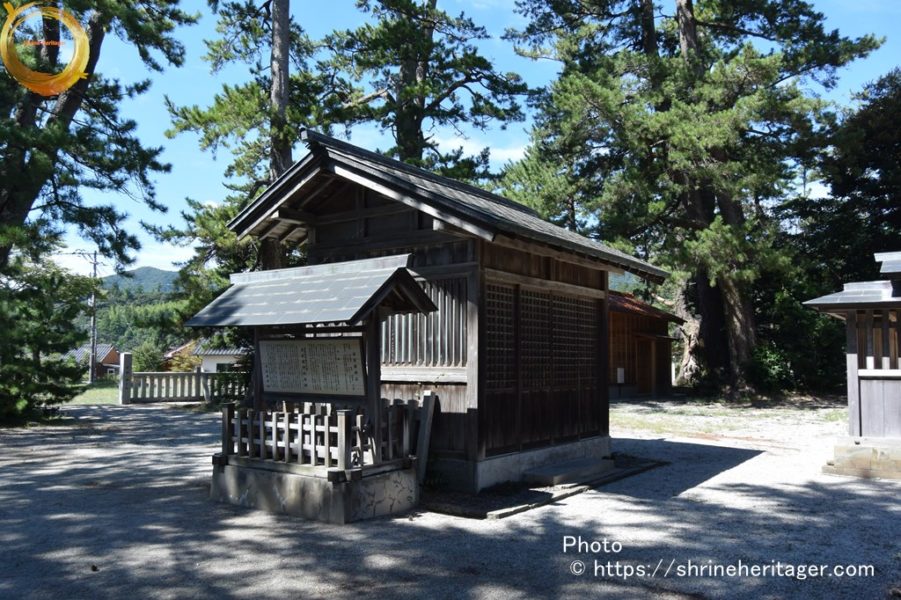
水若酢神社(Mizuwakasu Shrine) tomb group
There are two in existence.
水若酢神社(Mizuwakasu Shrine) tomb group
At 水若酢神社(Mizuwakasu Shrine), there are two tombs called Mizuwawa Vinegar Shrine Kofun Group. In this No. 1 pass, ornaments such as earthenware from the middle of the 6th century to the 7th century, iron products such as swords and swords, and magatama are buried, and it is thought that the period when the tomb was built was around this time. The horizontal hole stone chamber currently exposed is the largest in the Oki area with a length of 11 meters, and two sarthagums believed to have been placed in the basal chamber were found.
As for The No. 2 pass on the back side of the main hall, the seal is scraped by the main shrine, but it leaves a hill that can be thought of as a circle.
Based on the size and construction of the stone chamber of No. 1, it is an ancient tomb that can be thought of as a relationship with influential people in this area at that time, and it is considered to be one of the most important tombs in the Oki area.
From the information board
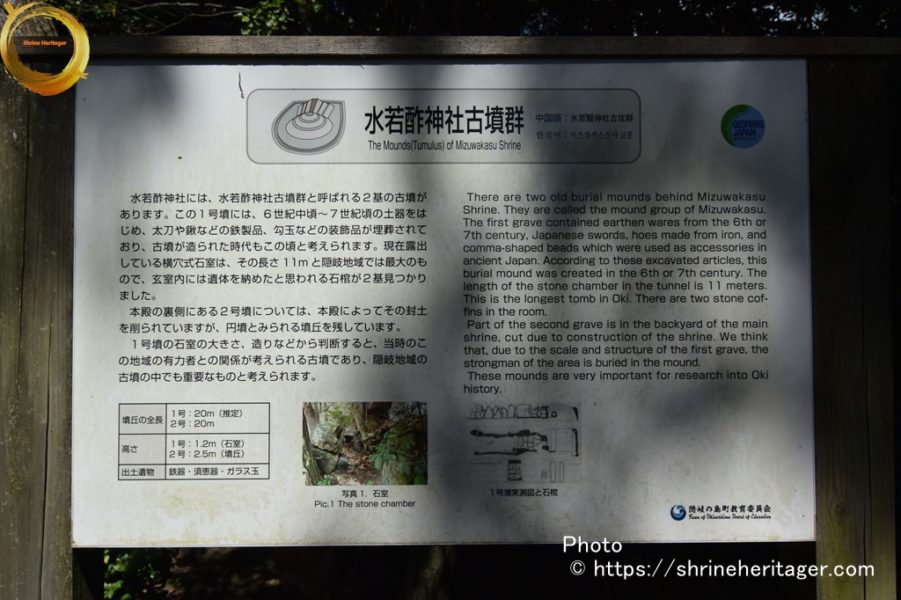
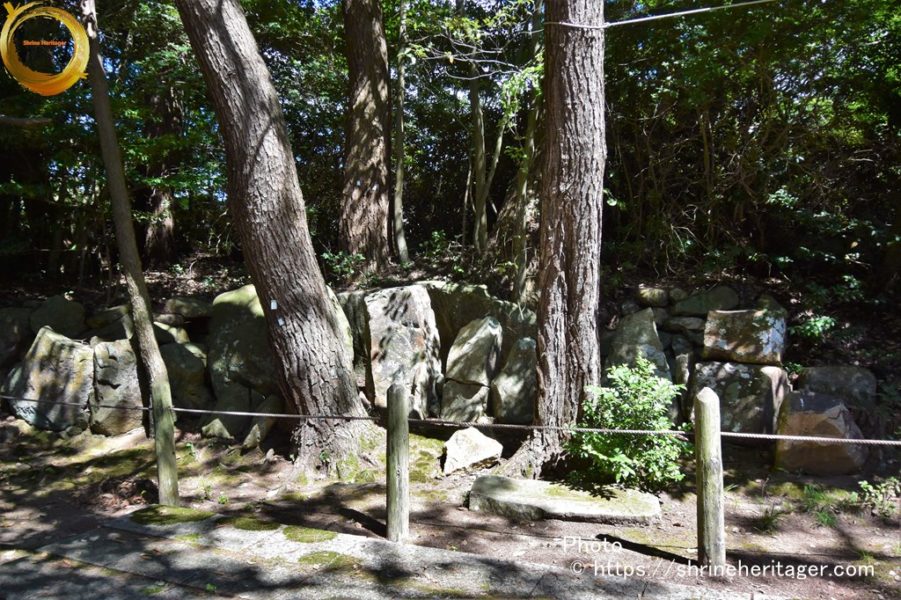
To the east of the shrine is the Oki Local Museum.
The building was relocated and restored from the Oki County public office in the Meiji era, and exhibits folk cultural properties and Takeshima materials, which are designated tangible cultural properties of the prefecture.
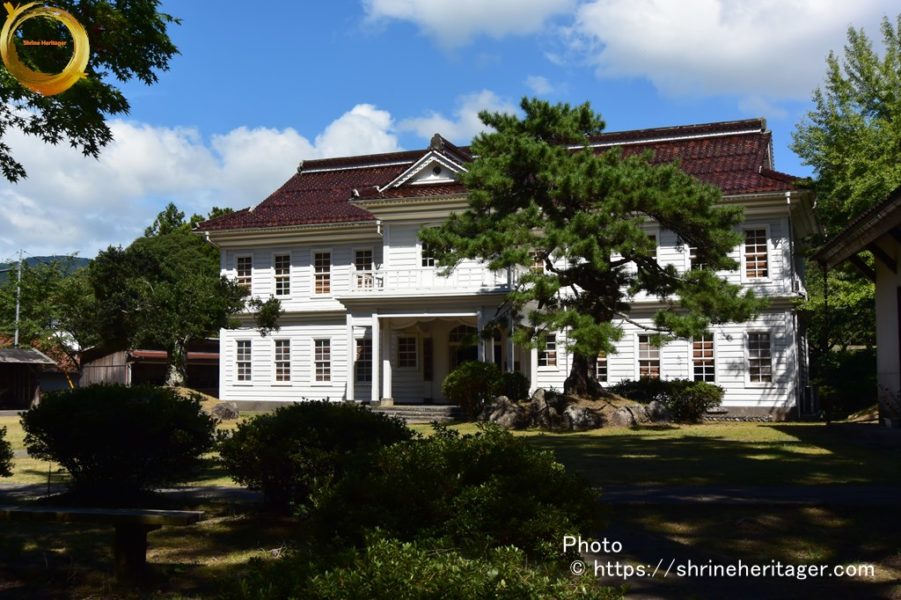
島根県指定有形文化財 旧周吉外三郡役所庁舎
(昭和四十五年十月二十七日建第十八号)This building was built in 1885 by the Oki Sagun (Suki, Ochi, Chibu, Ama) federation in the center of Saigo Town as the Suki District Three County Office Building. After that, it was transferred to Shimane Prefecture and used as the Oki Island Government Building, Oki Branch Office Building in Shimane Prefecture, etc., but since it was abandoned in 1943, Goka Village took over this, and in May 1945. It has been relocated, restored, managed and opened to the public in this area.
There are 12 girders (width) (22.91 meters) and 5 girders (depth) (9.55 meters). It has the characteristics of the government guard architecture in the early Meiji era, but it also has unusual characteristics such as the bellows being made of wood instead of plaster and the roof being not a hipped roof but a gable.
It is the oldest Western-style wooden building in Shimane prefecture and has maintained a lifeline of more than 100 years since its construction.
March 1993 Shimane Prefectural Board of Education
From the information board
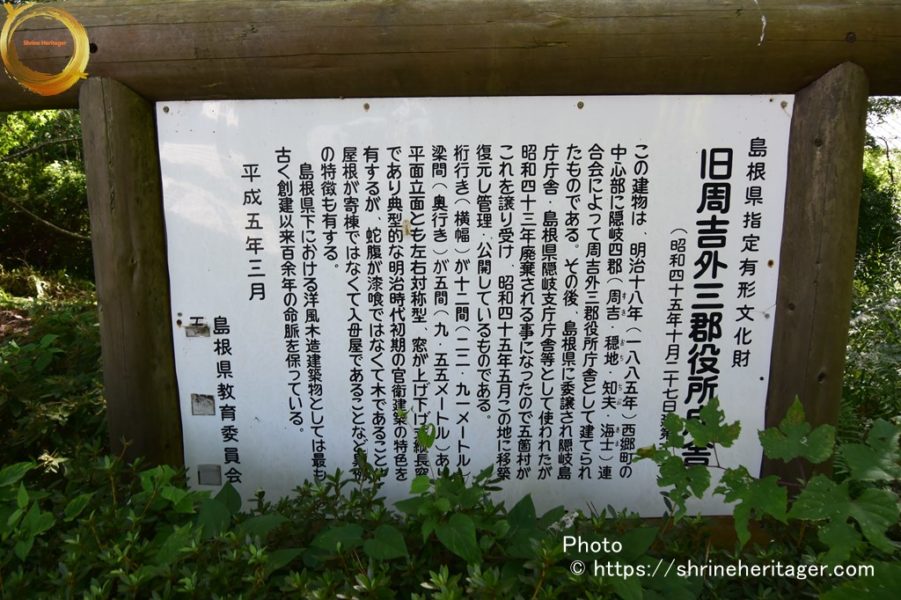
Go back to the precincts and go through the shrine gate.
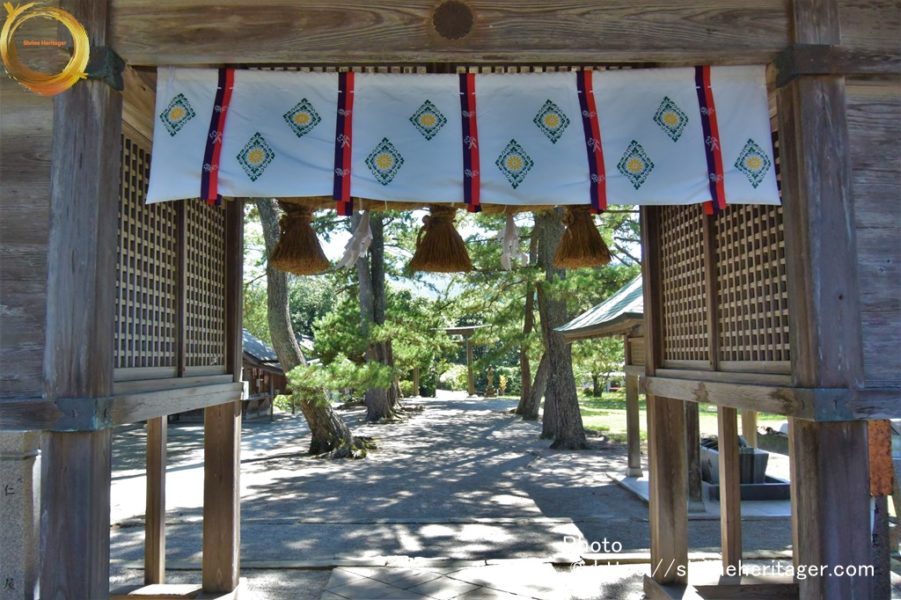
There is a company office and a award office next to the approach, and I will accept it and return the approach.
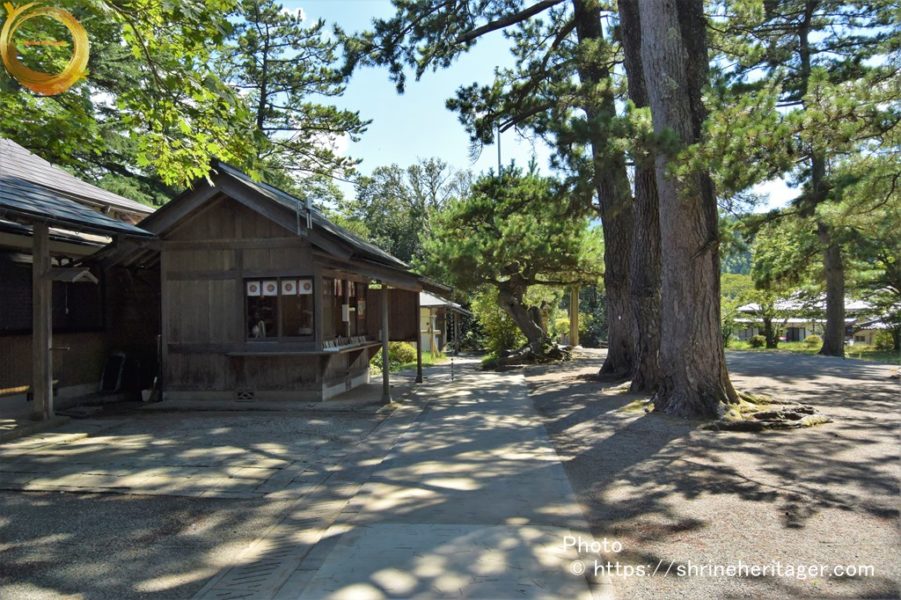
I'll go through the torii and turn around and bow.
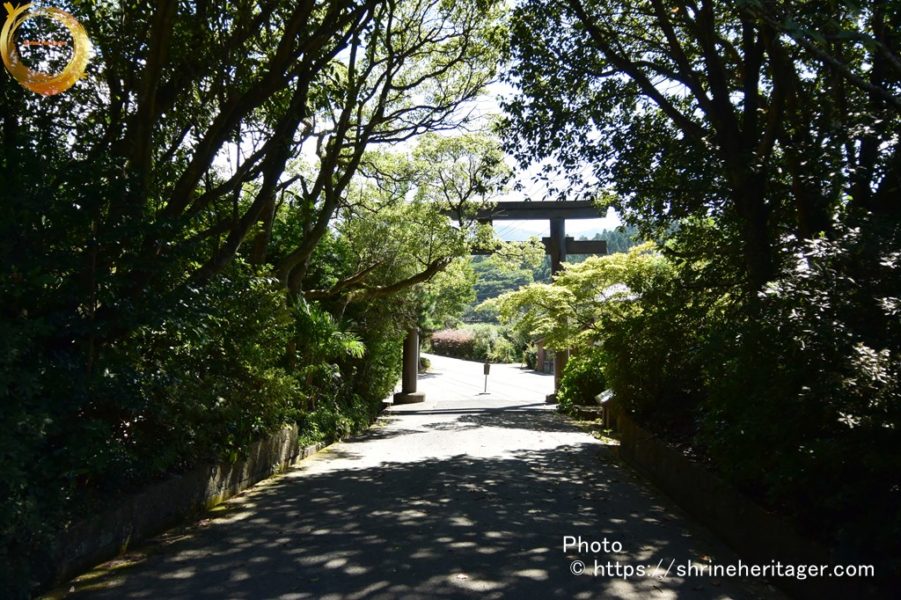
スポンサーリンク
神社の伝承(Old tales handed down to shrines)
I introduce the thing related to this shrine and the literature described.
『続日本後紀(shoku nihon koki)』仁明天皇承和9年(842)9月の条 に記される伝承
It is written that three shrines in Oki Province will be entrusted to the government office at the same time.
由良比売命神(西ノ島の由良比女神社)・宇受加命神(中ノ島の宇受賀命神社)・水若酢命神(島後の水若酢神社)
「 隠岐国 智夫郡 由良比賣命神(yurahime no mikoto no kami)
海部郡 宇受加命神(ukeka no mikoto no kami)穏地郡 水若酢命神(minawakasu no mikoto no kami)
並預官社 」
[Reference] National Archives Digital Archives "Continued Nihongoki" (869) Sadakan 11 years completion Winner: Fujiwara Ryobo / School revision: Tateno Spring Festival Kanmoto Hiromasa 2007 [former brewer] Ministry of the Interior
https://www.digital.archives.go.jp/DAS/meta/listPhoto?LANG=default&BID=F1000000000000047680&ID=&TYPE=&NO=
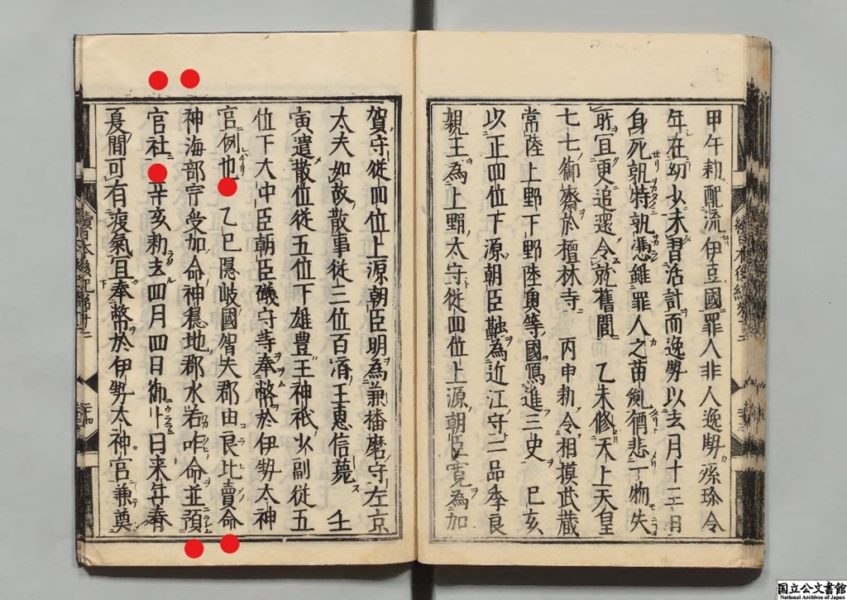
水若酢神社(mizuwakasu shrine)に「拝 (hai)」(90度のお辞儀)
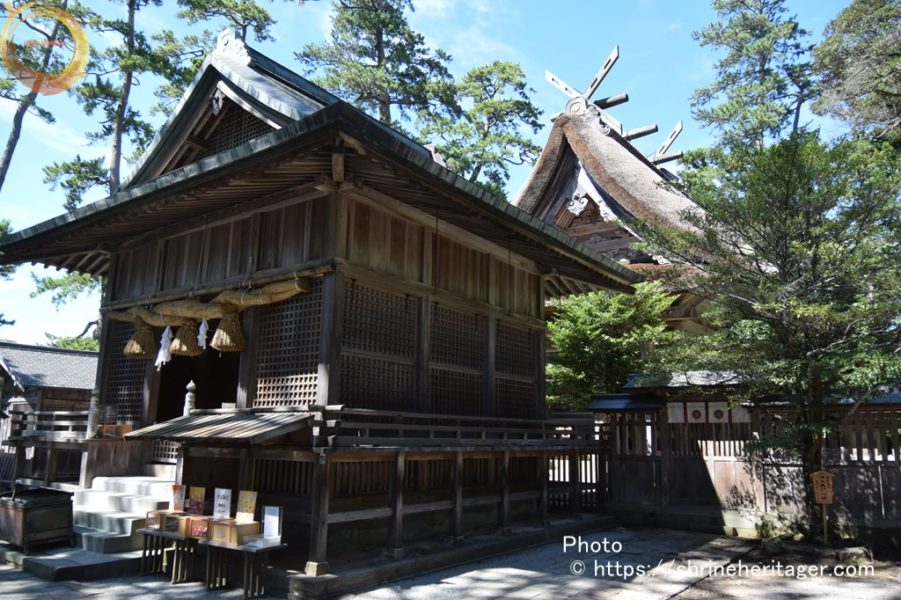
There is another Ichinomiya in the Oki Islands
島前の一之宮「由良比女神社」の記事もご覧ください

